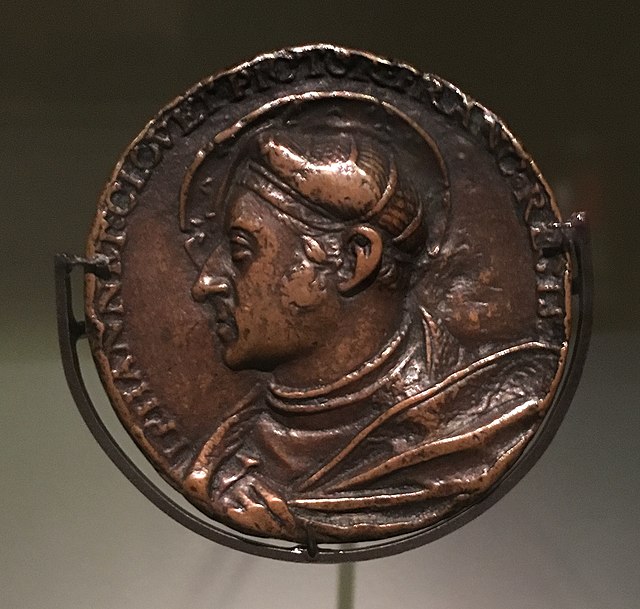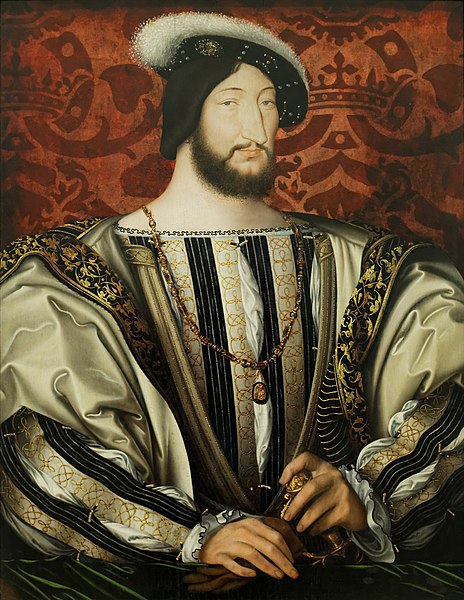Jean Clouet (1480–1541) was a miniaturist and painter who worked in France during the High Renaissance. He was the father of François Clouet.
Jean Clouet
Jean and François Clouet, François I of France, c. 1530, oil on panel, Louvre.
Jean Clouet, Portrait of Madame de Canaples (Marie d'Assigny), c. 1525, National Gallery of Scotland, Edinburgh.
Portrait of Francis I as Saint John the Baptist, 1518, Louvre.
A portrait miniature is a miniature portrait painting, usually executed in gouache, watercolor, or enamel. Portrait miniatures developed out of the techniques of the miniatures in illuminated manuscripts, and were popular among 16th-century elites, mainly in England and France, and spread across the rest of Europe from the middle of the 18th century, remaining highly popular until the development of daguerreotypes and photography in the mid-19th century. They were usually intimate gifts given within the family, or by hopeful males in courtship, but some rulers, such as James I of England, gave large numbers as diplomatic or political gifts. They were especially likely to be painted when a family member was going to be absent for significant periods, whether a husband or son going to war or emigrating, or a daughter getting married.
A display case with 18th-century portrait miniatures at the National Museum in Warsaw.
Portrait Miniature of Margaret Roper by Hans Holbein the Younger, c. 1535–36
Christian Horneman's miniature portrait of Ludwig van Beethoven (1802).
The future Duke of Wellington in 1808, by Richard Cosway.








